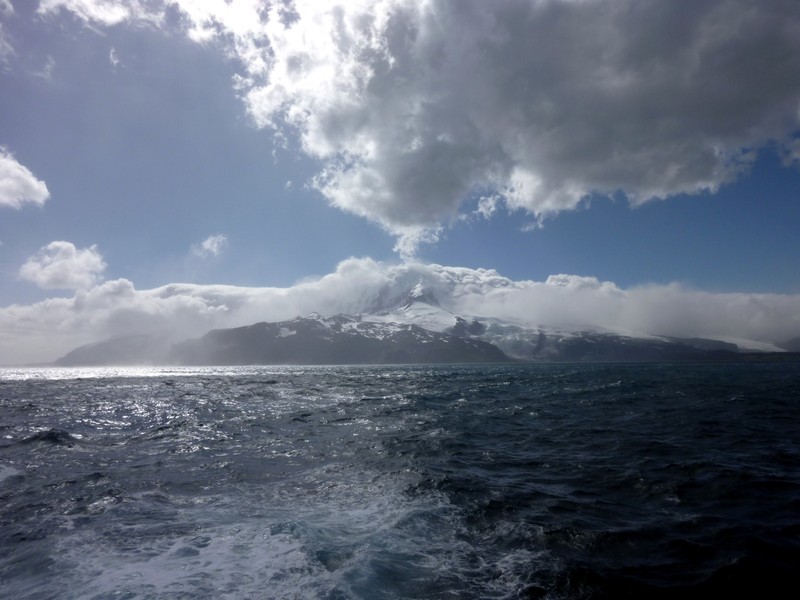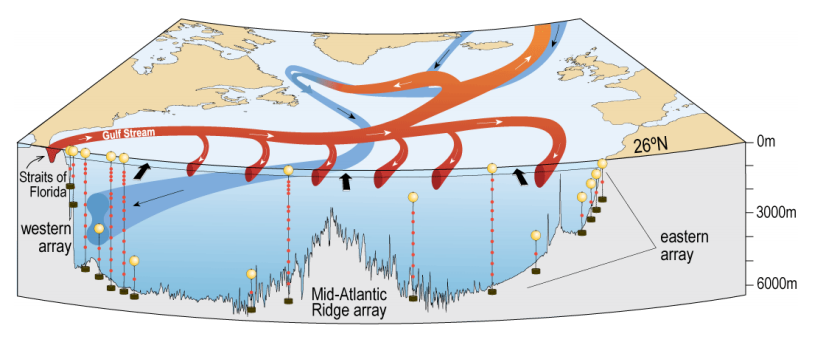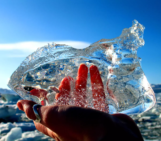Wherever you are in the world’s oceans, you can identify particular bodies of water (provided you have the right equipment) by how salty they are. You can get a feel for how productive that part of the ocean is by measuring a few chemical components in the water column. And, year on year, you will see a recurring pattern in how things like temperature, salinity and oxygen content vary with depth. This last property – the oxygen content – is vital for life in the oceans, but recent decades have seen shifts in the amount available.
There is always more oxygen at the surface than there is at depth. When waves break they mix an abundance of tiny air bubbles into the water, providing oceans with their oxygen supply, which is mixed into the deep through large-scale ocean circulation and storms over winter. At the surface, algae make the most of the abundant light to photosynthesise, beginning the base of the marine food web and adding a little more oxygen to the water in the process. These microscopic plants are eaten by animal plankton (zooplankton), which are, in turn, eaten by other plankton, crustaceans, fish, and a plethora of other predators – none of which contribute to the ocean’s oxygen. Instead, they, and a multitude of microbes, slowly use up more and more of the supply as they respire and there comes a point in the water column where there is no longer enough oxygen for these aerobic animals to survive – the oxygen minimum zone (OMZ).

The surface ocean, where oxygen begins its journey to the deep. (Credit: Anna Lourantou, distributed via imaggeo.egu.eu)
What marks the boundary of this zone is dependant not on the properties of the water, but the life that lives there – it is the point when marine organisms experience hypoxic stress, usually an oxygen concentration in the range of 60–120 μmol kg−1. Below this, life in the marine environment is very different indeed. Anaerobic microbes thrive below the OMZ, making the most of life in an environment where there is very little oxygen in each litre of seawater.
The boundary between oxygen-rich water and the OMZ is known as the oxygen limiting zone (OLZ), and during the day many small swimming species take refuge here to avoid their predators. In the Eastern Pacific, you reach the OLZ when there’s 60 μmol kg−1 oxygen in the water, and the OMZ when there’s a mere 20 μmol kg−1.

Waves are key to mixing oxygen into the ocean. When they break at the surface they mix air bubbles into the water, taking oxygen from the atmosphere into the sea. (Credit: NOAA Okeanos Explorer Program)
The depth of the OMZ depends on temperature. Because warmer water is capable of containing less dissolved gas than cold, the OMZ is found at shallower depths in the tropics, and occurs at shallower depths in the summer than it does over winter. Winter weather allows more oxygen to be mixed into the deep ocean as storms break down the sea’s stratification, bringing nutrients to the surface and replenishing supplies closer to the sea floor. However, when there’s a lot of production at the surface (which draws down the oxygen) and the replenishment at depth is slow, large oxygen minimum zones persist from year to year.
Recently though, the upper boundaries of these zones have been shifting to shallower depths, resulting larger hypoxic regions in the ocean. Since the 1960s, the OLZ in the Gulf of Alaska, for example, has shifted some 100 metres shallower. Why?
The oceans are absorbing more heat in response to climate change. Because high temperatures reduce oxygen solubility, they reduce the amount of dissolved oxygen at the surface. The increase in surface heat also creates stronger stratification in the ocean, making it harder for oxygen to be mixed deep into the water column, and reducing dissolved oxygen at depth. Ocean circulation systems are also in a state of change, with systems like the Atlantic meridional overturning circulation in decline. Such changes in ocean circulation will also affect the amount of oxygen that’s mixed into the deep sea.

Atlantic meridional overturning circulation, better known as AMOC. Red arrows show warm water circulation in the upper 1100 m and blue arrows show the southward flow of cold, deep water. (Credit: Smeed et al., 2014)
Working out whether this is part of a long-term trend is a difficult task, as records of deep ocean oxygen only stretch back to 70 years ago. Only a longer record of observations will help determine the trend, but for now we can be sure that shoaling oxygen minimum zones will change the amount of habitat available to species either side of the line between oxygen-rich and oxygen-poor.
By Sara Mynott, EGU Communications Officer
References:
Gilly, W. F., Beman, J. M., Litvin, S. Y., & Robison, B. H.: Oceanographic and biological effects of shoaling of the oxygen minimum zone. Annual Review of Marine Science, 5, 393-420, 2013
Smeed, D. A., McCarthy, G. D., Cunningham, S. A., Frajka-Williams, E., Rayner, D., Johns, W. E., Meinen, C. S., Baringer, M. O., Moat, B. I., Duchez, A., and Bryden, H. L.: Observed decline of the Atlantic meridional overturning circulation 2004–2012, Ocean Sci., 10, 29-38, 2014


